by Cheryl Oestreicher, Project Archivist, Auburn Avenue Research Library on African American Culture and History
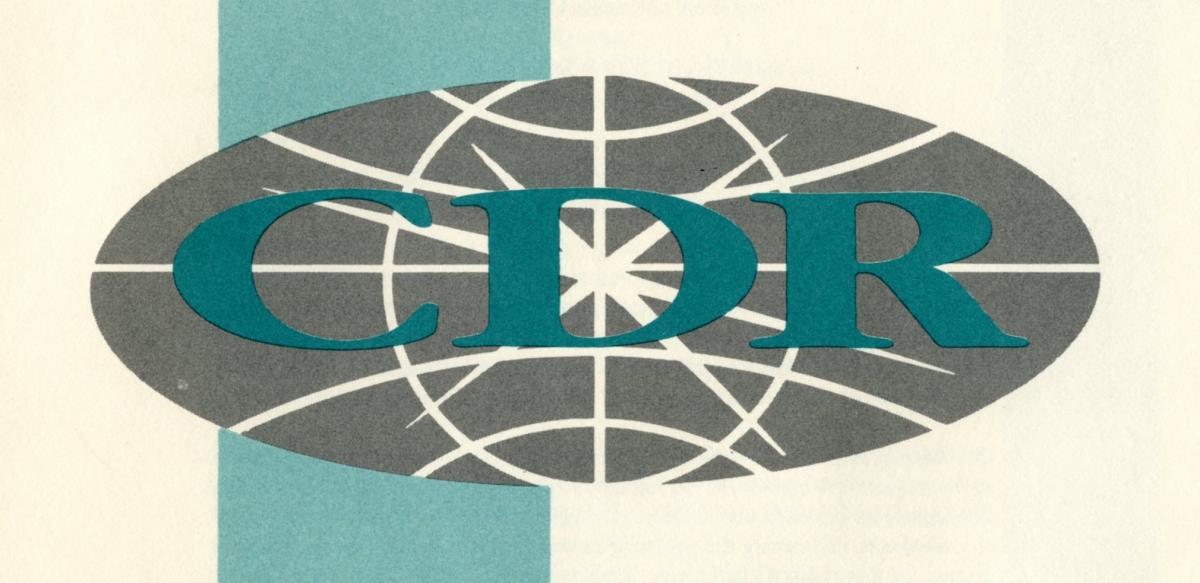 “Working for Freedom: Documenting Civil Rights Organizations” is a collaborative project between Emory University’s Manuscript, Archives and Rare Book Library, The Auburn Avenue Research Library on African American Culture and History, The Amistad Research Center at Tulane University, and The Robert W. Woodruff Library of Atlanta University Center to uncover and make available previously hidden collections documenting the Civil Rights Movement in Atlanta and New Orleans. The project is administered by the Council on Library and Information Resources with funds from the Andrew W. Mellon Foundation. Each organization regularly contributes blog posts about their progress.
“Working for Freedom: Documenting Civil Rights Organizations” is a collaborative project between Emory University’s Manuscript, Archives and Rare Book Library, The Auburn Avenue Research Library on African American Culture and History, The Amistad Research Center at Tulane University, and The Robert W. Woodruff Library of Atlanta University Center to uncover and make available previously hidden collections documenting the Civil Rights Movement in Atlanta and New Orleans. The project is administered by the Council on Library and Information Resources with funds from the Andrew W. Mellon Foundation. Each organization regularly contributes blog posts about their progress.
For more information about the collection described in this post, please contact the Archives at Auburn Avenue Research Library, aarl [dot] archives [at] fultoncountyga [dot] gov
Throughout its nearly 30 year existence, a major part of the mission of the Center for Democratic Renewal (CDR) was to act as a clearinghouse of information about hate crime activity. To do this, they had offices in Kansas City and Seattle as well as their headquarters in Atlanta collect newspaper and magazine articles, news stories, and first-hand accounts of incidents from across the country. They also subscribed and obtained numerous newsletters, newspapers, magazines, and other publications.
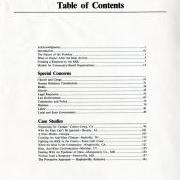  |
| Above left: Table of Contents from 1st edition, 1986. Above right: Fact Sheet for 2nd edition, 1992. Click to view full size images |
They used this data to produce their publications, fact sheets, and reports on far right and white supremacist groups, hate crimes, church burnings, and other related topics. First published in 1986, their major publication was “When Hate Groups Come to Town: A Handbook of Model Community Responses.” Initially geared towards responses to the Ku Klux Klan, the original manual included case studies from California, Alabama, Georgia, Texas, Connecticut, Kentucky, and Maryland. They interviewed organizers, educators, law enforcement officers, reporters, public officials, average citizens, business people, human rights workers, and “even a few Klansmen.” The guide offered advice on how to respond to hate crime and violent activities, primarily organizing a community group with members from all races, nationalities, religious denominations, and other area representatives. The manual promoted three objectives for all communities to address:
1. Persuade law enforcement officials to take a forceful public stand against the KKK;
2. Isolate the Klan politically and socially;
3. Show the Klan as only a symptom of deeper problems.
The manual’s second edition included the KKK but expanded to address other groups and issues related to racism, Anti-Semitism, anti-gay and homophobia, and violence against women. It incorporated the broader White Supremacist movement, including Christian Identity, Aryan Nations, Neo-Nazis, Tom Metzger, Skinheads, David Duke, Lyndon LaRouche, the Liberty Lobby, the New Right, and others. It also came with a poster that mapped out Far Right and White Supremacist ideologies, organizations, names, and media. The third edition consisted of updated information of the second edition and added parts to deal specifically with the youth and faith communities. The overview of racism and bigotry included definitions of psychological and cultural racism, scientific racism, political disenfranchisement, unequal access to basic services, and foreign policy, reflecting their expanded goals of addressing racism as reflected not just in actions against people, but in society’s education, health care, social welfare, politics, economic development, and democracy.
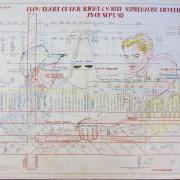 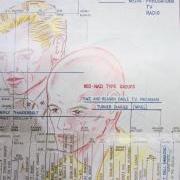 |
| Above left: Poster from 2nd edition, 1992. Above right: Close-up of poster from 2nd edition, 1992. Click to view full size images. |
In 2002, the revised the third edition into specifically a faith-based edition. Understanding that “faith-based organizations and churches are some of the most influential social institutions in our country” and had potential to influence people and communities to combat hate crime activity. Written partially in response to the rise of racist activity after September 11, it included how religion influenced and propagated past racial beliefs and how to reframe thinking and discussion to understand and combat hatred.
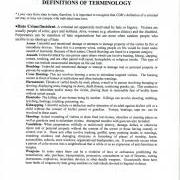 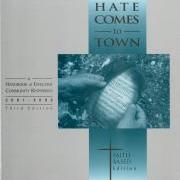 |
| Above left: From 3rd edition, 1990s. Above right: Faith-based edition, 2002. Click to view full size images. |

How do I get a copy of the third edition of “When Hate Groups Come to Town”? I see that it’s your’s! -Ann Van Dyke